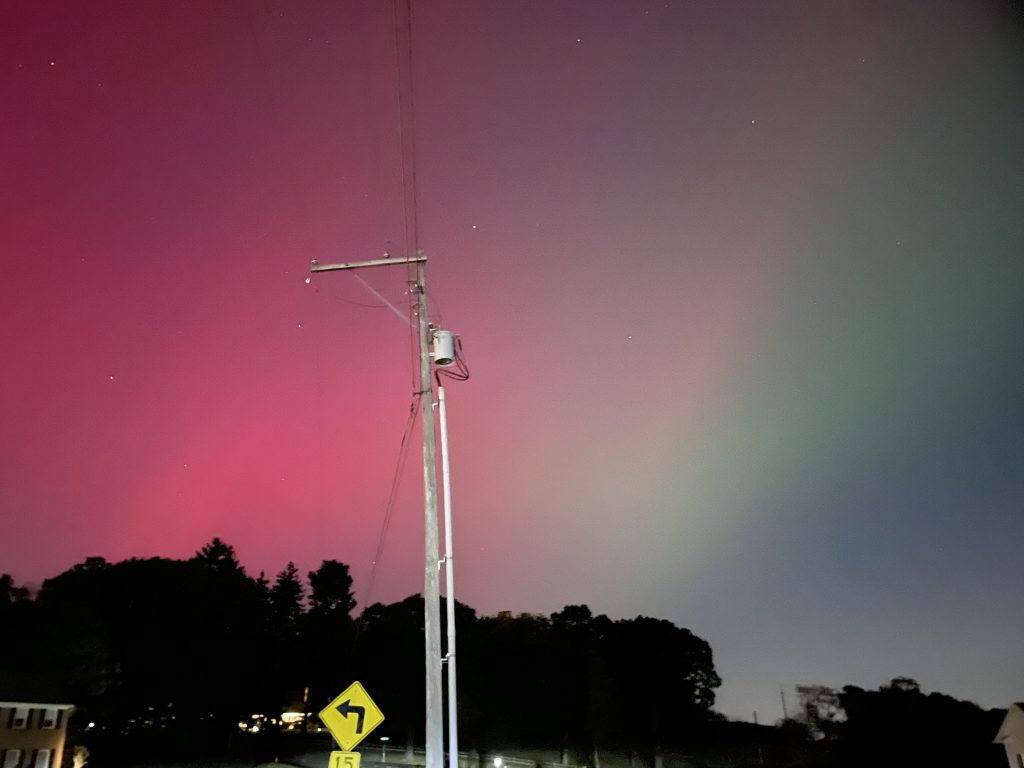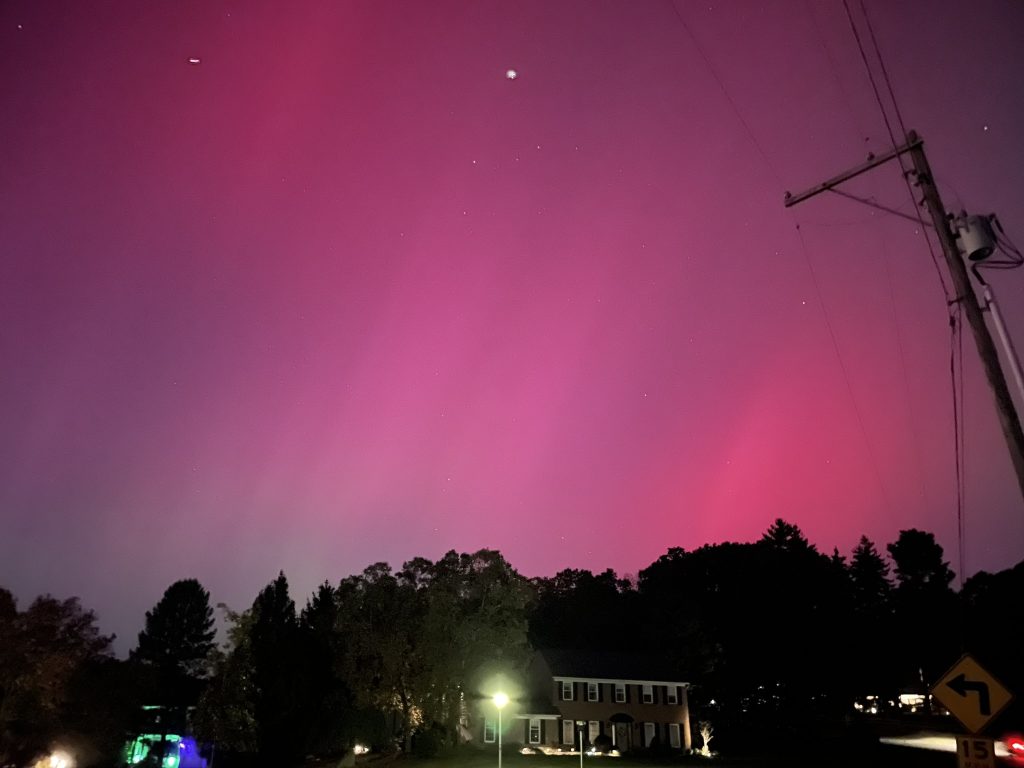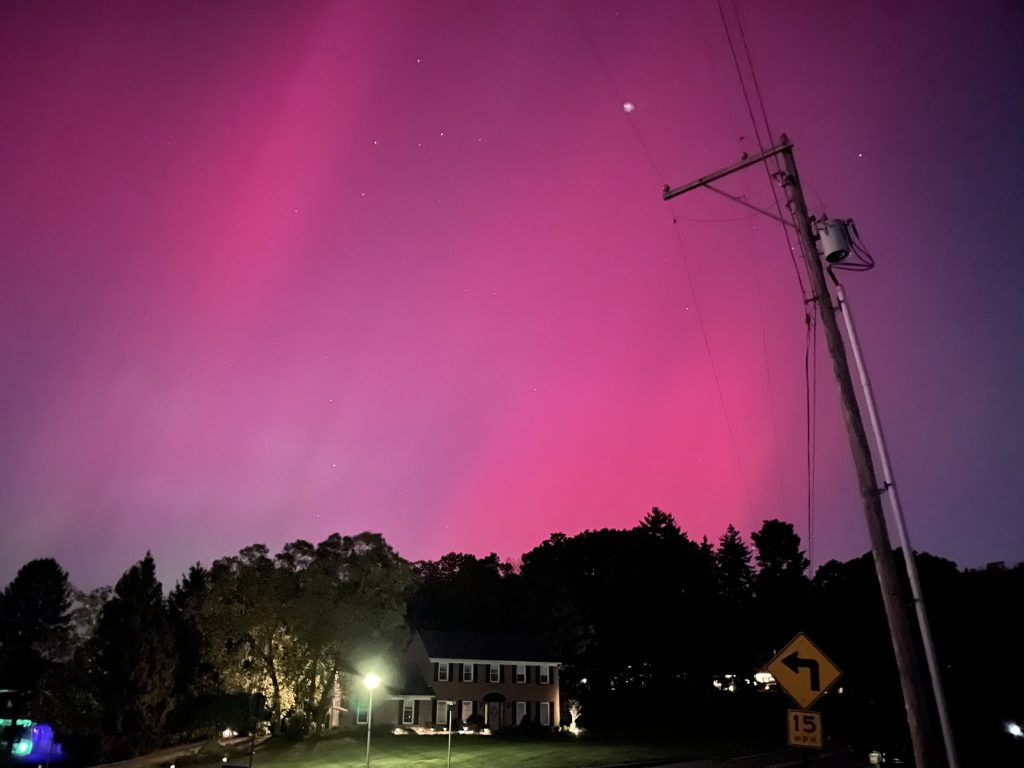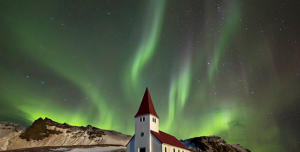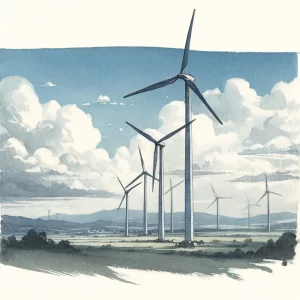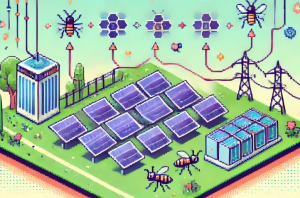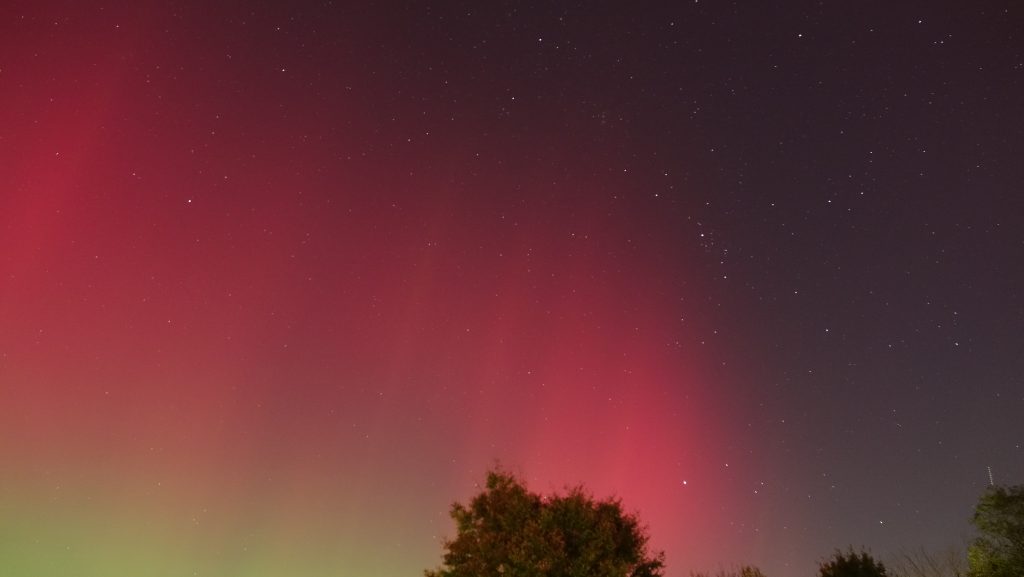
The Freaking Northern Lights
About 15 years ago, my wife, another couple, and I went to Iceland. It was during May, so the sunset about 10:30 PM and rose at 2:00ish AM. The nighttime stayed in a perpetual twilight that prevented any really good stargazing. The only bummer from that trip was that we didn’t get to see any aurora.
Flash forward to October 10, 2024. My eldest son walks in from soccer practice, yelling, “Why is the sky pink?” I first thought sunset, but I looked out to the south, seeing nothing but stars. Then I turned around.
What Causes the Northern Lights?
A significant coronal mass ejection (CME) slammed into the earth, causing something I never thought I’d see in my backyard. But how?
A CME is a release of plasma and magnetic field from the Sun’s corona, which is the outermost part of the Sun’s atmosphere. During a CME, billions of tons of charged particles, mostly electrons and protons, are ejected into space at high speeds. These events are often associated with solar flares and sunspots and can travel through the solar system, occasionally impacting Earth.
When a CME reaches Earth, the charged particles interact with the planet’s magnetosphere, a protective magnetic field surrounding it. The magnetosphere shields Earth from the bulk of solar radiation, but during strong solar storms, like a CME, some charged particles can penetrate the magnetosphere, particularly near the poles, where the magnetic field is weaker.
As these charged particles from the Sun collide with gases in Earth’s atmosphere, such as oxygen and nitrogen, they energize the atoms, causing them to release energy in the form of light. This is your Northern lights. The color of the aurora depends on the type of gas involved and the altitude of the collisions:
- Green auroras are the most common and are produced by oxygen at lower altitudes (around 60 miles or 100 kilometers).
- Red auroras are rarer and occur from oxygen at higher altitudes (above 150 miles or 240 kilometers).
- Blue or purple auroras result from nitrogen molecules at various altitudes.
All I can really say is, “Whoa.”
Here’s some from my neighborhood.
And here are some from our newsletter person extraordinaire, Kathie.
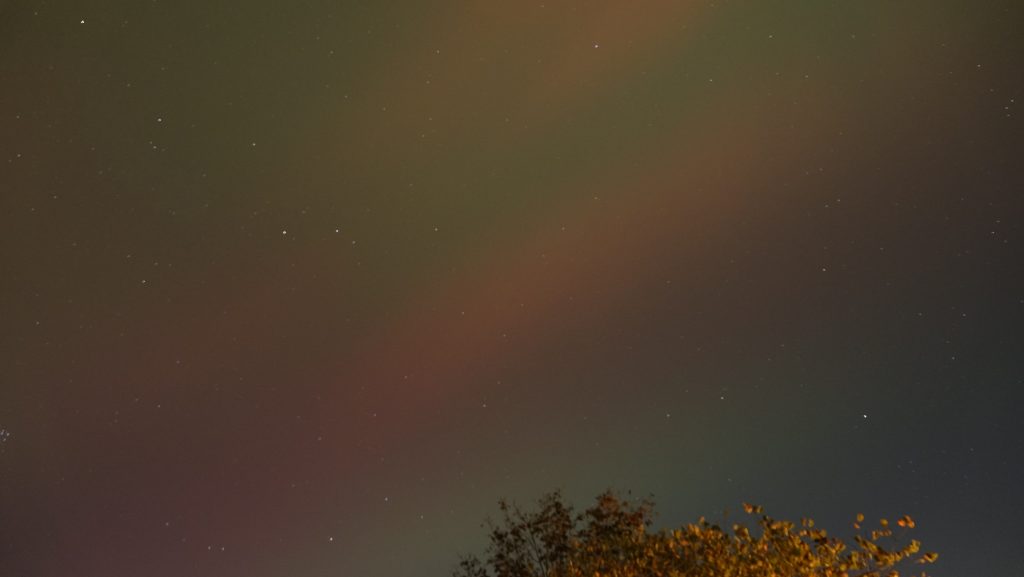

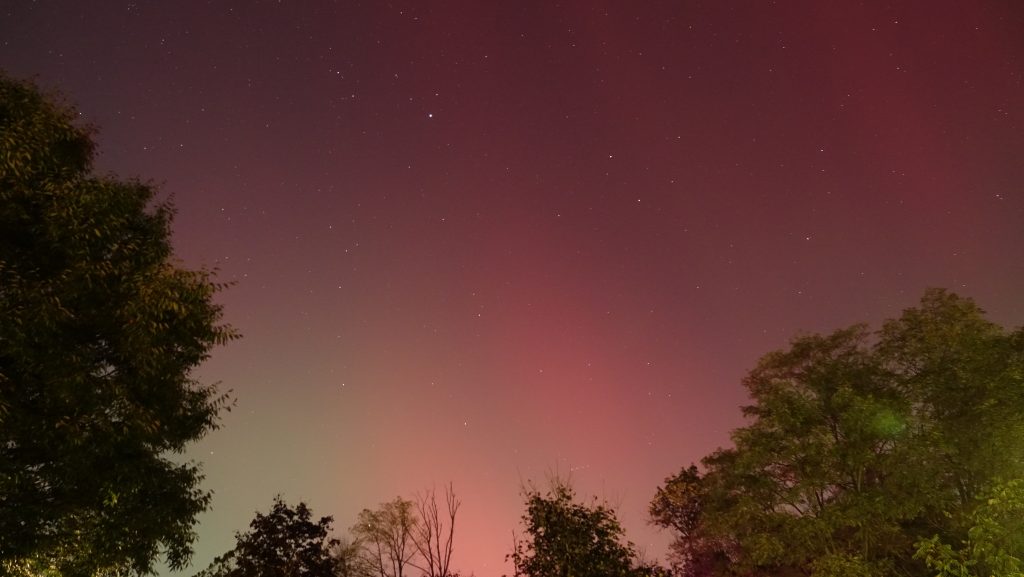
Hell of a show!
Unlock Science Secrets
Discover revolutionary research and innovative discoveries with ‘This Week in Science’! Designed for educators and science lovers, our free weekly newsletter offers insights that can transform your approach to science. Sign up now and deepen your understanding and passion for science. If you liked this blog, please share it! Your referrals help This Week in Science reach new readers.

